Thinking in WarpScript
Thinking in WarpScript is a series of articles about the WarpScript language, an extensible data programming language. It offers more than 1000 functions and several high-level frameworks to ease and accelerate your data analysis. Simply create scripts containing your data analysis code and submit them to the Warp 10 platform. They will execute close to where the data resides and you will get the result of their analysis as a JSON object that you can integrate into your application.
This series Thinking in WarpScript will cover various aspects of it and make you feel more comfortable and be more efficient when using Warp 10.
Find more information about WarpScript on warp10.io.
Find the list of WarpScript functions and a Cheatsheet to download here.
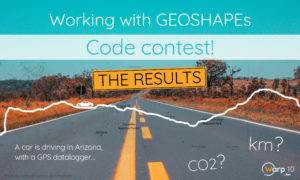
Thinking in WarpScript
Working with GEOSHAPEs: code contest results
- May 21, 2021
- Code contest
- Geo Time Series
- Transportation
Discover the results of the GEOSHAPE code contest about a car's GPS track on Route 66. Step by step, explore the data and see how to find the answers.
Read More
Thinking in WarpScript
12 tips to apply sliding window algorithms like an expert
- May 13, 2021
- Geo Time Series
- WarpScript functions
We present 12 simple tips to make full use of the powerful MAP framework for manipulating time series with sliding window algorithms.
Read More
Thinking in WarpScript
Working with GEOSHAPEs: code contest!
- April 16, 2021
- Code contest
- Geo Time Series
- IoT
- Transportation
Using WarpLib geo functions, solve two simple (?) questions, and win the code contest!
Read More
Thinking in WarpScript
Thinking in WarpScript: Variables in Macros
- April 1, 2021
- Macros
Variables and macros are the muscles and bones of your script. Here are concepts and functions to make the best use of variables in macros.
Read More
Thinking in WarpScript
WarpScript 101: About the syntax
- October 20, 2020
- Popularization
- WarpScript functions
WarpScript syntax can look alien at first. We discuss the thoughtful reasons for its design and see how easy it is to get used to it.
Read More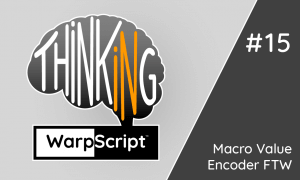
Thinking in WarpScript
Macro Value Encoder FTW
- June 2, 2020
- Geo Time Series
Parse and transform values on the fly using WarpScript macros as they are pushed to your Warp 10 instance. Discover this feature via protobuf serialization.
Read More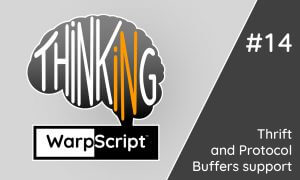
Thinking in WarpScript
Thrift and Protocol Buffers support in WarpScript
- May 19, 2020
- IoT
- Plugin/Extension
- WarpScript functions
Learn how to use Thrift and Protocol Buffers directly from within WarpScript and without the need for code generation
Read More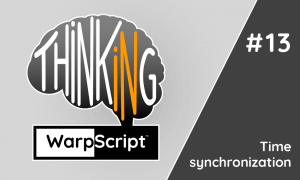
Thinking in WarpScript
How to synchronize Timestamps
- March 10, 2020
- Geo Time Series
- WarpScript functions
Learn how to synchronize timestamps of two Geo Time Series and copy the locations from one to the other.
Read More
Thinking in WarpScript
FETCHez la data !
- December 5, 2019
- IoT
- WarpScript functions
Accessing your time series data is the first thing you have to do, that is why Warp 10 offers so many options for retrieving data. Discover them in this post!
Read More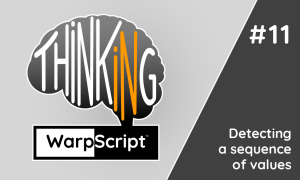
Thinking in WarpScript
Thinking in WarpScript – Detecting a sequence of values
- October 29, 2019
- Geo Time Series
- WarpStudio
WarpScript is a handy toolkit build for time series manipulation. A common use case could be to detect a sequence of values lasting a given duration
Read More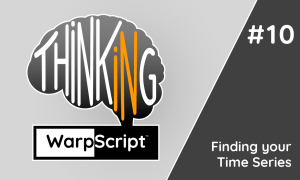
Thinking in WarpScript
Thinking in WarpScript – Finding your Time Series
- October 17, 2019
- WarpScript functions
Get to know the Warp 10 Directory and discover functions which query it.
Read More
Thinking in WarpScript
Thinking in WarpScript – Fetch data within a geographical area
- October 10, 2019
- Geo Time Series
It is time go back to the basis. Extract data within a geographical area.
Read More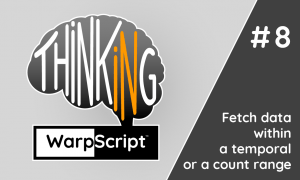
Thinking in WarpScript
Thinking in WarpScript – Fetch data within a temporal or a count range
- October 1, 2019
- WarpScript functions
It is time to go back to the basics. The FETCH function allows you to extract your data from Warp 10 in different manners.
Read More
Thinking in WarpScript
Thinking in WarpScript – Protecting Secrets
Learn how to access sensitive information from macros or runner scripts without exposing those secrets in your WarpScript source code
Read More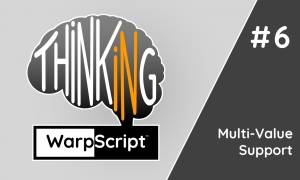
Thinking in WarpScript
Thinking in WarpScript – Multi-Value Support
- August 6, 2019
- Geo Time Series
Discover everything about the new Multi Value syntax introduced by release 2.1 of Warp 10.
Read More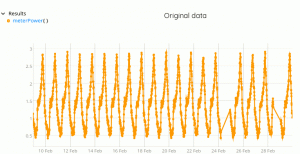
Thinking in WarpScript
Compare data hour to hour, day to day
- June 11, 2019
- Energy
- WarpScript functions
Comparing every sunday data in a given timezone is not trivial. With WarpScript language, this is a pretty straightforward time series analytics.
Read More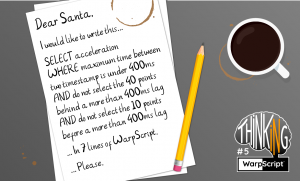
Thinking in WarpScript
SELECT x WHERE system is not lagging
- May 21, 2019
- KISS
- Performance
WarpScript equivalent to SELECT WHERE requests is a basic GTS sum. You just need to build a new GTS to select interesting data from the original one!
Read More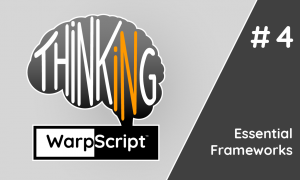
Thinking in WarpScript
Thinking in WarpScript – Essential frameworks
- May 16, 2019
- WarpScript functions
In this blog post, we review the essential frameworks available in WarpScript. They simplify greatly usual time series processing.
Read More
Thinking in WarpScript
Thinking in WarpScript – Authoring Macros
- April 30, 2019
- Macros
Learn how WarpScript Macros can make your code more concise, more robust and shareable.
Read More
Thinking in WarpScript
Thinking in WarpScript – Detecting anomalies
- April 16, 2019
- Machine Learning
WarpScript, the data programming language of the Warp 10 platform, offers built-in functions to help you detecting anomalies. We review them in this post.
Read More